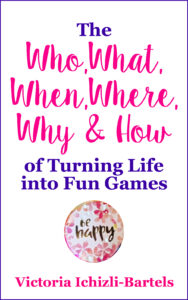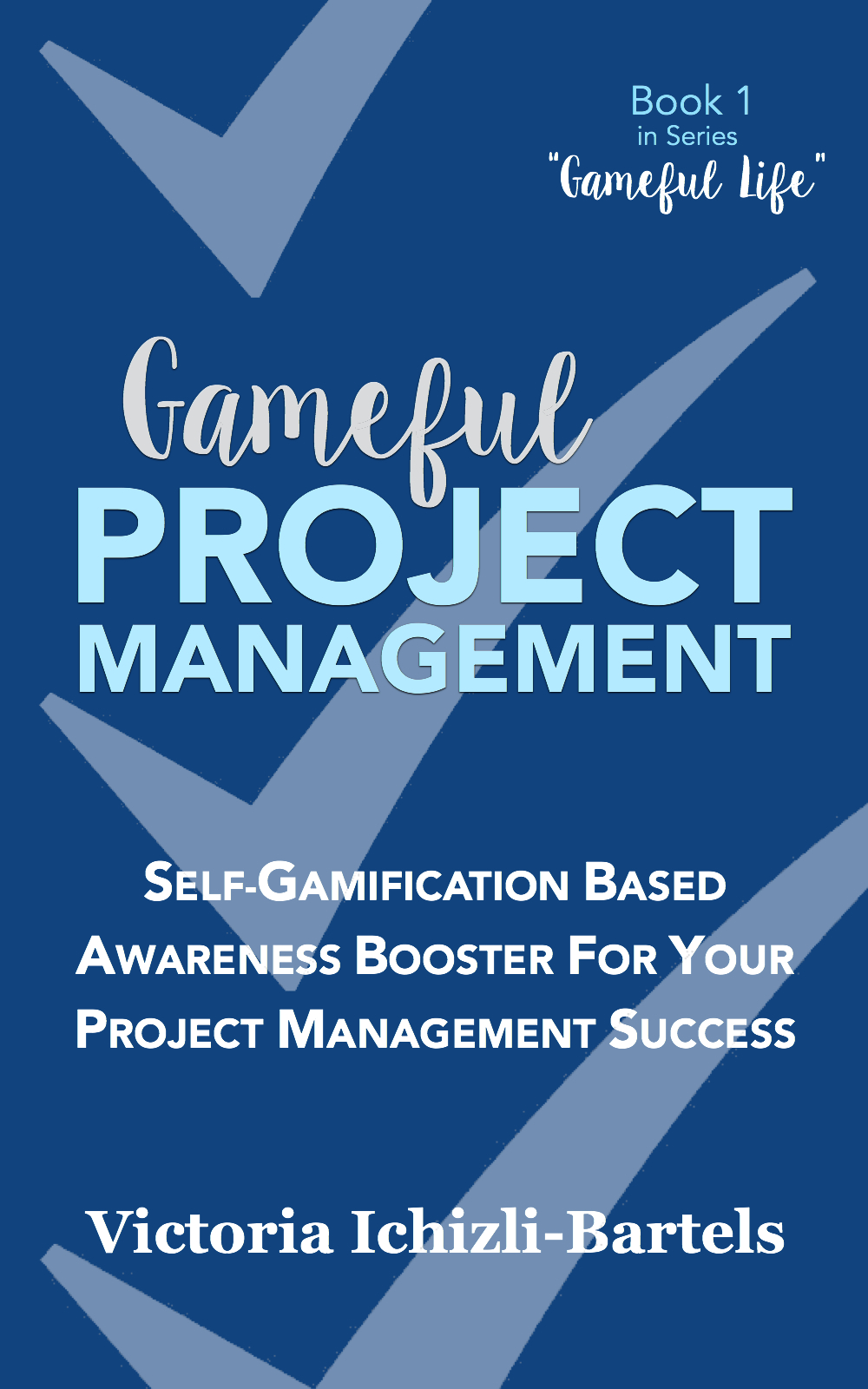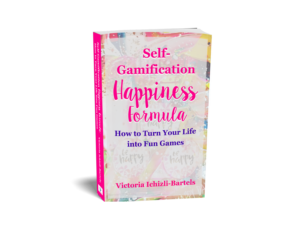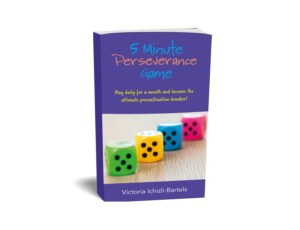My new little book The Who, What, When, Where, Why & How of Turning Life into Fun Games, which is a short and reworked version of the Self-Gamification Happiness Formula raised interest on social media as well as discussions on what could that mean to turn one’s life into games. One of those who commented said that it sounds like a “culture changer.” It might. Surely, when I wrote the books on Self-Gamification, I hoped that many would profit from the approach I developed unknowingly for myself and later was asked to explain to and share with others. But in fact, these books, including the latest one, addressed just one person. The reader, who read the copy he or she held in their hands at any given moment. Here is one of the excerpts of the book, which explains what that means (a spoiler alert: the chapter “Where?” extends on this topic).
Who?
Who is responsible for turning projects, activities, and whole lives into games?
The simplest answer is, “You.”
No one else can turn the things in your life into games that you will find fun. You are both the designer and player of your Self-Motivational Games.
But let’s see who you might be, and why I believe that the approach summarized in this book is for you.
1. Who is it for?
This book, and the Self-Gamification approach introduced in it, is for anyone who wants to bring fun and joy into various projects and activities they take on, and if they wish so, to all aspects of their lives.
Since I am a non-gamer, I initially had all my fellow non-gamers in mind, or those who play games very occasionally and prefer spending their free time doing activities other than games, but who, like me, want to enjoy life regardless of how it turns out. This approach will help non-gamers lose the suspicion and fear they might hold against games, as I did in the past (especially for video games), and find a natural starting point for turning their lives into fun games without having to delve into gamification design or psychological research.
But if you are a gamer (that is someone who spends many hours playing various games, often video and online games, in your free time) then this method is also for you. It will show you that experiencing fun doesn’t have to stop with switching off your video game. You will learn that you can take your favorite games and apply their elements to every-day life and become the super-hero yourself.
If you have already tried to consciously turn some activities into games and wonder how you can extend gamification principles to other or every area of your life, then this approach will help with that too.
Gamification designers can also profit by discovering techniques and skill sets to enable the users of their frameworks to obtain maximum benefit from their products.
A few words about age. The approach in this book is applicable to both children and adults. I had adults, including young adults, in mind when I wrote this book, but I would like to urge you to share the possibility of turning your life into fun games with your children or your younger siblings and friends. This will enrich the experiences of the whole family or community.
2. Who is it not for?
Either Self-Gamification Happiness Formula or this book is not for someone who:
- Is looking for the results of scientific studies on gamification,
- Wishes to study the psychotherapeutic effects of gamification,
- Wishes to learn advanced game or gamification design techniques, or
- Seeks a scientific book on self-therapy, self-counseling, or self-help therapy.
Nor is it for those who:
- Want to escape everyday challenges,
- Want to give up their current jobs, companies, or relationships,
- Seek a quick-fix, one-time happiness “pill” to solve all their problems,
- Think that hard work and being serious are essential and that having fun is a flaw, or
- Despise games and believe there is nothing worth learning from them.
Speaking of despising games and their primary goal of bringing fun and making us happy, do you perhaps think all this gamification “stuff” is nonsense and that life is not a matter of enjoyment? That life is a torment, through which we must fight until the end? That life is unfair?
Then this approach is not for you.
But since you’ve read this far, perhaps you are looking for a way to change your mindset from serious and hard, to light and joyful.
In that case I invite you to continue reading.
But here are four more disclaimers for the Self-Gamification approach and the books addressing it:
First of all, it doesn’t promote the development of games that place their participants in scary or uncomfortable situations, like experiences shown on “Candid camera” or the like. I won’t be advising you to go bungee jumping, if that is not already your dream or wish. Most of the self-motivational and uplifting game examples discussed in this book are about making everyday activities and projects (i.e. those we have already committed to doing or want to address, and which we already have on our to-do or wish lists) fun, enjoyable, and achievable.
Second, although I mention some of my Self-Motivational Game designs here and describe them in detail in Self-Gamification Happiness Formula, I am not suggesting that you use them. You are free to do so. But my main message is that you are the designer of your own games. No one but you lives — and that is designs and plays — your life. So, ultimately, even if you try out some of the elements of my game plans, you will still put your own stamp on them as they become an integral part of your daily, monthly, and so on, games.
Third, this, or any other book on Self-Gamification, is not the description of an app. There is no Self-Gamification app, and I hope there never will be. After all, there could be many. And the same person would require countless versions, since we humans need a frequent change in occupation to feel alive.
Fourth, this book and the Self-Gamification approach do not show the way to eternal bliss. I can guarantee that after reading this book or Self-Gamification Happiness Formula, you will still experience discomfort and be upset and desperate from time to time. But you will feel more in control and have the tools at your disposal to make those periods of distress shorter. You will also learn how to shift your focus from complaints to creativity, and be able to bring yourself back into the flow without too much effort. And most importantly, you will learn to be both honest and kind to yourself.





